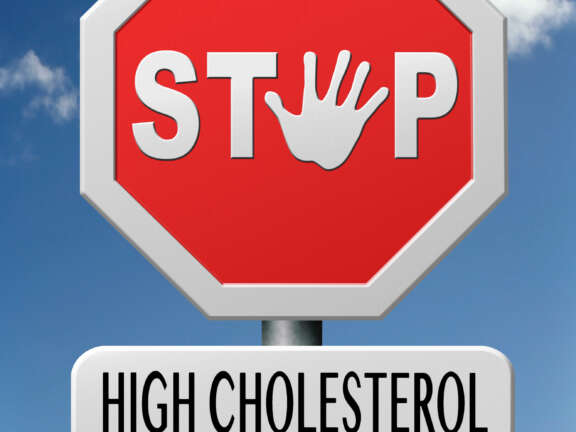High cholesterol (or hyperlipidemia) means high levels of lipids (fats) in your bloodstream.
Long-Term Effects
High cholesterol can cause plaque buildup in the arteries. This can narrow and harden the arteries and increase risk of heart disease, heart attack, and stroke.
Silent Disease
High cholesterol is a “silent” condition. It usually does not cause symptoms until you have major damage in your arteries. In fact, the first symptom of high cholesterol could be a heart attack or stroke.
High Cholesterol Is Common
High cholesterol is very common. It affects 86 million US adults ages 20 and older. In Texas, nearly 36% of adults have high cholesterol.
Causes
High cholesterol is caused by a combination of genetic and lifestyle factors.
Family History
If your mother or father has high cholesterol, especially high LDL levels, you are more likely to develop it.
Diet
Eating a diet high in saturated fats, trans fats, and cholesterol can raise your cholesterol.
Lack of Exercise
Not getting enough exercise can cause weight gain, lower your protective HDL cholesterol, and raise "bad” LDL cholesterol and triglycerides.
Excess Weight
Carrying extra pounds, especially in your belly, can raise your triglycerides and lower the good HDL cholesterol you need.
Age & Gender
Before age 50, men are more likely to have high cholesterol, but after 50 women are at increased risk.
Medical Conditions
Type 2 diabetes, hypothyroidism, kidney disease, and liver disease can increase your hyperlipidemia risk.
Medications
Diuretics, beta blockers, steroids, and birth control pills can raise cholesterol and triglycerides.
Smoking & Alcohol
Smoking lowers protective HDL cholesterol and excess alcohol can raise triglycerides.
symptoms
High cholesterol on its own doesn’t cause symptoms, but if damage to the arteries and other organs occurs, these symptoms may develop.
Xanthomas
These are yellowish raised bumps that form under the skin, especially near the eyes, elbows, and knees. You can also have xanthelasma, which appears as a yellowish plaque on or near your eyelids.
Chest Pain (Angina)
If plaque builds up in your arteries, it can cause chest pain or discomfort, especially while you’re exercising or stressed.
Heart Attack & Stroke Symptoms
Blockages in an artery to your heart or blood vessels to your brain can cause a heart attack or stroke. Heart attack symptoms include sudden chest pain or pressure; pain down your arm, jaw, or back; shortness of breath; sweating; and nausea. Stroke symptoms include sudden numbness or weakness (especially on one side of your body), confusion or trouble speaking, sudden difficulties seeing or walking, and dizziness.
DiagnosIs
Simple blood tests can check levels of three types of cholesterol:

Low-Density Lipoprotein (LDL)
LDL cholesterol supports your immune system, brain, and overall health, but too much can cause plaque buildup in the arteries, which is why LDL is often called the “bad” cholesterol.
A healthy LDL level is between 100-129 mg/dL. Levels between 130-159 mg/dL are borderline high, 160-189 mg/dL is high, and 190 mg/dL or higher is very high.
High-Density Lipoprotein (HDL)
Often called the “good” cholesterol, HDL helps to remove excess LDL from the bloodstream, reducing plaque buildup and reducing the risk of heart disease.
A healthy HDL level is 40 mg/dL or higher for men and 50 mg/dL or higher for women. Levels below that are considered low.
Triglycerides
Triglycerides store fuel for your body to use later. But high levels of triglycerides contribute to hardening of the arteries, especially if you also have high LDL.
Healthy triglycerides are below 150 mg/dL. Levels between 150 and 199 mg/dL are borderline high and levels from 200 to 499 mg/dL are high. Triglycerides above 500 mg/dL require medical attention.
Treatment
Treatment for high cholesterol involves lifestyle changes and, if needed, medication.
Lifestyle Changes
To reduce cholesterol, eat a heart-healthy diet that’s low in unhealthy fats and high in fiber-rich foods, fruits and vegetables, lean proteins, and whole grains.
It’s also important to lose weight, exercise, quit smoking, and limit alcohol.
Medications
Statins work by blocking a substance in your liver called HMG-CoA reductase, which your body needs to produce cholesterol.
Fibrates lower triglycerides and raise HDL cholesterol by working in the liver to break down fats. They’re often prescribed along with statins.
Bile acid sequestrants lower cholesterol by attaching themselves to bile in your gut, which forces your body to use more cholesterol to make new bile.
PCSK9 Inhibitors lower LDL by blocking a protein that limits the liver’s ability to remove bad cholesterol from the blood.
Supplements
Niacin is a special form of vitamin B3 helps to raise HDL cholesterol and lower LDL cholesterol and triglycerides. One downside is that niacin can cause side effects like flushing, especially on the face, neck, and upper body. Flushing is harmless, though it can be alarming to some people.
If medication and dietary/lifestyle changes don’t help, you may need to see a specialist like a cardiologist.
How We Can Help
Your annual wellness visits will include cholesterol screenings. If your levels are high, your provider will work closely with you to give you the tools you need to manage your cholesterol effectively.
For most people with mild to moderate high cholesterol, your provider will work directly with you to develop a plan to bring your levels back into a healthier range. However, if your cholesterol is significantly elevated or if your provider suspects conditions like heart disease, you may be referred to a cardiologist for specialized care. In these cases, your care team will collaborate to create a personalized, long-term care plan for you.
Looking for a provider?
Find one here or call us at
866-325-0301

